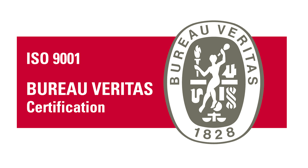記事

Obtaining an EP Patent - A crash course for the US applicant #1
Focus: Claim drafting – My claim is rejected for missing an essential element
The EP standpoint
A claim, whether initially filed or as an amendment, may be rejected for missing an essential element under Article 84 EPC1.
An element is essential to a claimed invention if it contributes to the technical effect provided by the invention. Each independent claim must therefore contain all features presented as necessary to carry out the invention.
The essentiality of the element may be explicit (the description states that the invention has to include such element) or understood by the person skilled in the art reading the description as a whole. The element may be considered essential if, for example, the invention is presented systematically with the element (such as in every example and/or embodiment of the description). Yet, the features which, even if consistently mentioned in the description of the invention, do not actually contribute to the solution of the problem are not essential features.
The US applicant may be used to an equivalent rejection by the USPTO under 35 U.S.C. 112(a) (enabling requirement). In the US, a claim that omits an element which the applicant describes as an essential or critical feature of the invention originally disclosed does not comply with the written description requirement2. The essentiality is thus determined from the standpoint of the person skilled in the art.
In a European application, to assist in determining if an element is essential to an invention, a test, the “non essentiality test”, has been developed. Following the non-essentiality test, an element is considered as non-essential if the skilled person would directly and unambiguously recognize that (1) the feature was not explained as essential in the disclosure, (2) it was not, as such, indispensable for the function of the invention in the light of the technical problem it served to solve, and (3) the replacement or removal required no real modification of other features to compensate for the change.
If, for example, the description states that a specific quantity of sand is needed to obtain a particular concrete, but the claim is missing that quantity, a rejection for lack of essential element (the quantity) may be raised. In another example, specific details of a curving belt were not considered essential as the presence of the curving belt is enough to provide the technical effect of the invention in view of the problem to solve.
As an applicant, what should you do?
First, you should be careful when drafting the description to only present as essential those elements needed to contribute to the technical effect provided by the invention. This means refraining from using definite language such as “X element is needed for / is essential” and using conditional language when describing the elements composing the invention. It also means to carefully review the presentation of the technical effects and problems solved by the invention.
In addition, it is recommended to present in isolation in the description the elements that may be considered as essential. For example, one may present one element per paragraph. This may help to avoid having rejections under Article 123(2) EPC for intermediate generalization.
Second, if you receive an objection under Article 84 EPC that the claim is missing an essential element, you may respond by amending the claim to add the missing essential element, or by arguing that the element does not participate to the technical effect provided by the invention (for which you may use the non-essentiality test).
References
- Article 84 EPC
- EPC Guidelines F-IV 5.2 (includes concrete examples of where an element was considered essential or not)
1Article 84 EPC states that “The claims shall define the matter for which protection is sought. They shall be clear and concise and be supported by the description.”
2See MPEP 2163.05 and Gentry Gallery, 134 F.3d at 1480, 45 USPQ2d at 1503; In re Sus, 306 F.2d 494, 504, 134 USPQ 301, 309 (CCPA 1962)
























